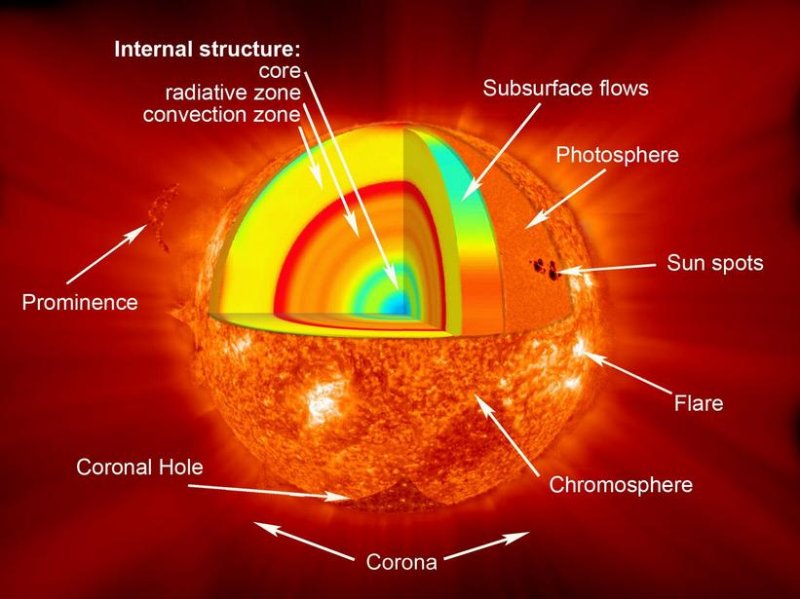The chromosphere is a narrow layer above the photosphere that raises in temperature with height. The coloring of the chromosphere (deep red) is caused by the immense hydrogen supply it contains. Credit: NASA
WHITE SANDS, N.M., July 5 (UPI) -- A rocket carrying an instrument to study changing magnetic fields on the sun was launched from the White Sands Test Facility in New Mexico Thursday, NASA said.
The Solar Ultraviolet Magnetograph Investigation, or SUMI, will study the intricate, constantly shifting magnetism in a hard-to-observe area of the sun's low atmosphere called the chromosphere, the space agency said in a release.
The chromosphere is a thin layer of solar atmosphere sandwiched between the visible surface, the photosphere, and its atmosphere, the corona.
The magnetic fields lie at the heart of how the sun can create huge explosions of light such as solar flares, and eruptions of particles such as coronal mass ejections, referred to as the solar "wind."
While there are already instruments, both on the ground and in space, that can measure these fields, none of them can see the layer SUMI will observe, NASA said.
Understanding the structure of the magnetic fields in this region will help scientists understand how the corona is heated and how the solar wind is formed, the release said.
The flight of SUMI, lasted about 8 minutes, and is considered a test flight to make sure the instrument works and to assess possible improvements, researchers said.
"With the knowledge we get from a successful SUMI mission, we can go on to build space-based instrumentation that will help us understand the processes that form flares and CME's and help us predict space weather," Jonathan Cirtain, a solar scientist at NASA's Marshall Space Flight Center in Huntsville, Ala., said.















